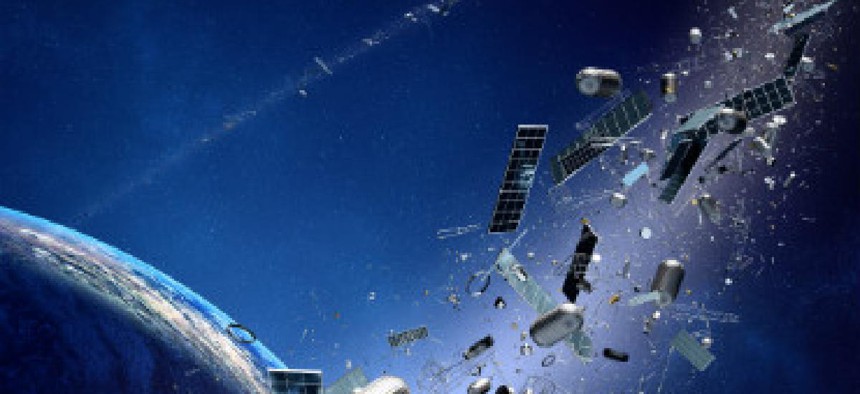DARPA network shields against space junk

DARPA hit a milestone for a data network aimed at avoiding collisions in Earth's orbit.

The Defense Advanced Research Projects Agency is a step closer to being the traffic cop on the final frontier.
The agency is developing a network to gather data on spacecraft, debris and other potentially hazardous stuff whizzing around in Earth's orbit in hopes of preventing potentially catastrophic collisions.
DARPA announced on June 29 that it had completed a critical part of its OrbitOutlook program by integrating live data feeds from seven providers of space situational awareness (SSA) data from more than 100 sensors worldwide. That accomplishment makes OrbitOutlook the largest and most diverse SSA network ever assembled, DARPA said.
OrbitOutlook tracks hundreds of thousands of objects traveling as fast as 17,000 miles an hour. Some are as tiny as a fleck of paint, and others, such as spent rocket staging, can be as big as a bus.
Knowing the location of all that material is crucial to avoiding collisions with the 1,200 commercial and military satellites operating around the Earth. Orbital collisions, even among space junk, can spawn chain-reaction pileups that block satellite lanes for hundreds of years.
DARPA said it will soon begin testing scalable, automated algorithms on the integrated data feed to identify and extract relevant data that experts could use to make decisions about how to handle potential problems. The algorithms are part of an OrbitOutlook archive that stores observation data from sensors and the processed data the algorithms produce.
DARPA officials will test algorithms designed to validate the quality of diverse datasets from non-certified SSA sensors in real time to see if they contain reliable, usable data. The archive and the algorithms are kept in a sophisticated data center based on one developed by DARPA's Insight program for intelligence, surveillance and reconnaissance data.
The agency said testing on real data is scheduled to begin this fall. Officials plan to share the algorithms and the data archive with the space debris-tracking community through its Open Catalog.


